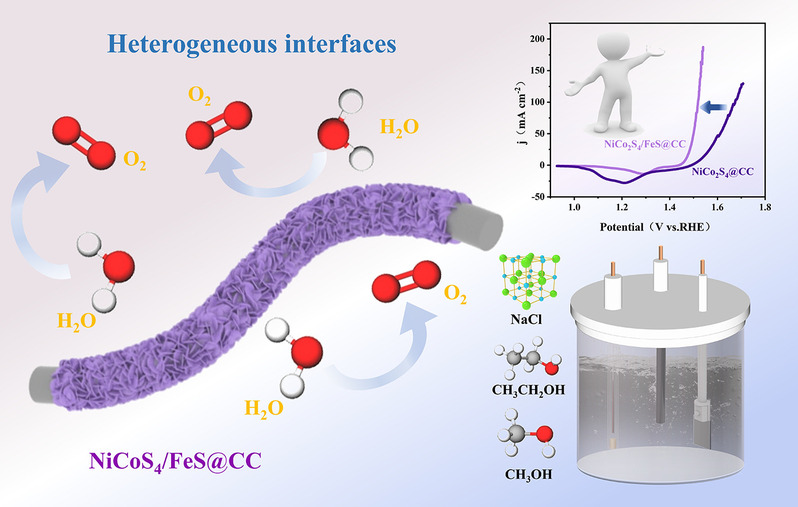MOF-derived NiCo2S4/FeS heterostructures with built-in electric field for enhanced electrooxidation in freshwater/ brine /ethanol/methanol
Jiapeng Wang , Hua-Bin Yuan , Yongxuan Xiang , Lili Xing , Xinpeng Chen , Yifeng Wang , Jiazhuang Chen , Guoqiang Chen , Tieling Xing*
College of Textile and Clothing Engineering, Jiangsu Engineering Research Center of Textile Dyeing and Printing for Energy Conservation, Discharge Reduction and Cleaner Production (ERC), Soochow University, Suzhou 215123, China
Oxygen evolution reaction (OER), as a half-reaction of water decomposition, has a high theoretical overpotential. Therefore, the development of electrocatalysts with high OER performance is favorable for electrolytic hydrogen production. In situ growth of nanomaterials on conductive substrates is an effective strategy for the preparation of electrocatalysts. In this work, we grew Ni/Co bimetallic metal-organic framework (MOF) on carbon cloth substrates and successfully constructed a robust NiCo2S4/FeS@CC electrocatalyst through a MOF derivatization strategy. This electrocatalyst can be used for efficient and robust OER performance. MOF-derived NiCo2S4/FeS has the advantage of a porous heterostructure and multicomponent with many active sites and faster charge transfer rate, while sulfur doping greatly improves the OER performance. The current density of this self-supported heterogeneous material in alkaline freshwater reaches up to 10 mA cm−2 with an overpotential of only 238 mV. NiCo2S4/FeS@CC exhibited good OER performance in alkaline brine with an overpotential of only 241 mV at 10 mA cm−2. We speculate that this is due to the generation of a negatively charged SO42− anionic layer on the catalyst surface during the electrooxidation process, which effectively avoids Cl− corrosion. And both conditions demonstrate excellent long time stability. Additionally, we succeeded in further reducing the onset potential and energy consumption by adding ethanol or methanol to the electrolyte. This work provides an effective method to improve the OER performance of MOF-derived transition metal electrocatalysts for hydrogen production from electrolytic water.

https://doi.org/10.1016/j.desal.2024.118253
